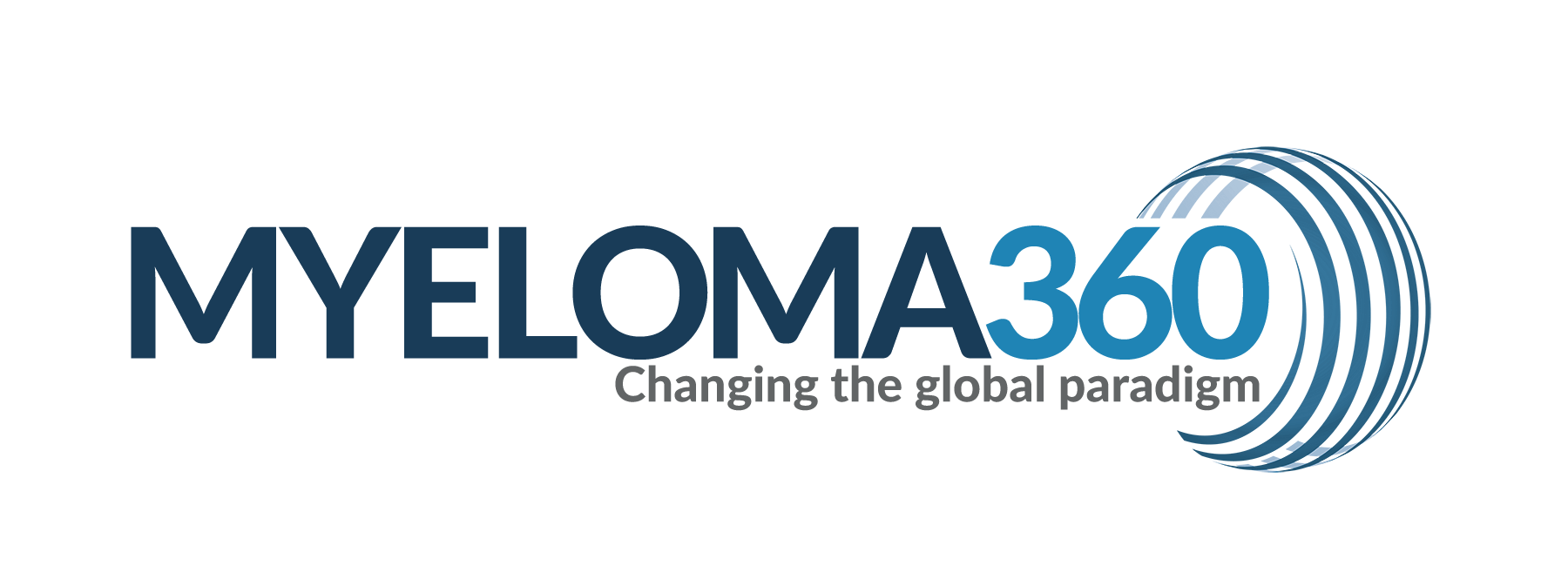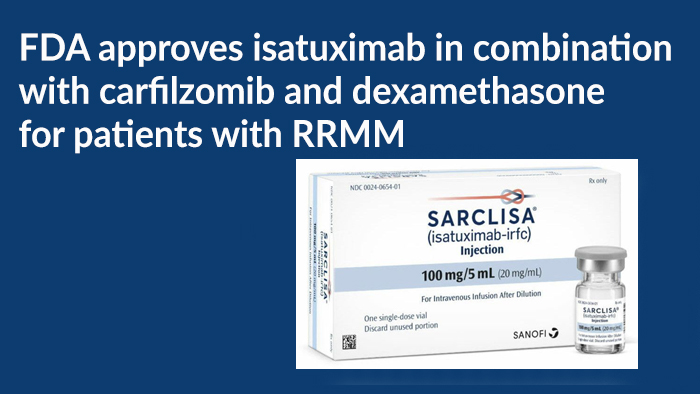The U.S. Food and Drug Administration (FDA) has approved Sarclisa® (isatuximab) in combination with carfilzomib and dexamethasone (Kd), for the treatment of adult patients with relapsed or refractory multiple myeloma (RRMM) who have received one to three prior lines of therapy.
This marks the second FDA approval for Sarclisa, which is also approved in combination with pomalidomide and dexamethasone (pom-dex) for the treatment of adults with RRMM who have received at least two prior therapies including lenalidomide and a proteasome inhibitor.
The approval was based upon results from the 302 patient Phase 3 IKEMA pivotal trial results. Key findings from that study were:
- Sarclisa regimen reduced risk of disease progression or death by 45% compared to standard of care in patients who had relapsed after one to three prior therapies
- While the median progression free survival (PFS) for Sarclisa combination therapy is not yet reached, consistent improvement in PFS is seen across patient subgroups
In this study, Sarclisa added to Kd (Sarclisa combination therapy) reduced the risk of disease progression or death by 45% (hazard ratio 0.548, 95% CI 0.366-0.822, p=0.0032) versus standard of care Kd alone in patients with multiple myeloma. The median progression free survival (PFS) for Sarclisa combination therapy was not reached at the time of the pre-planned interim analysis. This study enrolled a difficult-to-treat patient population, including those who are elderly, have high cytogenetic risk or renal impairment. Overall, demographic and disease characteristics at baseline were balanced between the two treatment groups.1
Secondary endpoints of the IKEMA trial assessed the overall response rate (ORR) for Sarclisa combination therapy compared to Kd, including complete response (CR) and very good partial response (VGPR). There was no statistically significant difference in ORR, which remained similar for each arm at 86.6% for the Sarclisa combination therapy versus 82.9% for Kd (p=0.3859). The rate of CR was 39.7% in the Sarclisa combination therapy arm and 27.6% in the Kd arm. The rate of VGPR was 33% for patients receiving Sarclisa combination therapy and 28.5% for patients receiving Kd.2 At the time of the interim analysis, overall survival (OS) data were still immature.2
The most frequent adverse reactions (occurring in 20% or more of patients) for Sarclisa versus the control arm were upper respiratory tract infection (67% vs. 57%), infusion-related reactions (46% vs. 3.3%), fatigue (42% vs. 32%), hypertension (37% vs. 32%), diarrhea (36% vs. 29%), pneumonia (36% vs. 30%), dyspnea (29% vs. 24%), bronchitis (24% vs. 13%), and cough (23% vs. 15%). Serious adverse reactions that occurred in more than 5% of patients who received Sarclisa combination therapy were pneumonia (25%) and upper respiratory tract infections (9%). Permanent discontinuation of treatment because of adverse reactions (Grade 1-4) occurred in 8% of patients treated with Sarclisa combination therapy, and 2.8% of patients discontinued due to an infection.1
Read Full Sanofi Press Release
References:
1. Sarclisa Prescribing Information. March 2020.
2. Moreau et. al. Isatuximab Plus Carfilzomib And Dexamethasone Vs Carfilzomib And Dexamethasone In Relapsed/Refractory Multiple Myeloma (Ikema): Interim Analysis Of A Phase 3, Randomized, Open-Label Study. Oral presentation at European Hematology Association Virtual Congress 2020. June 12, 2020

